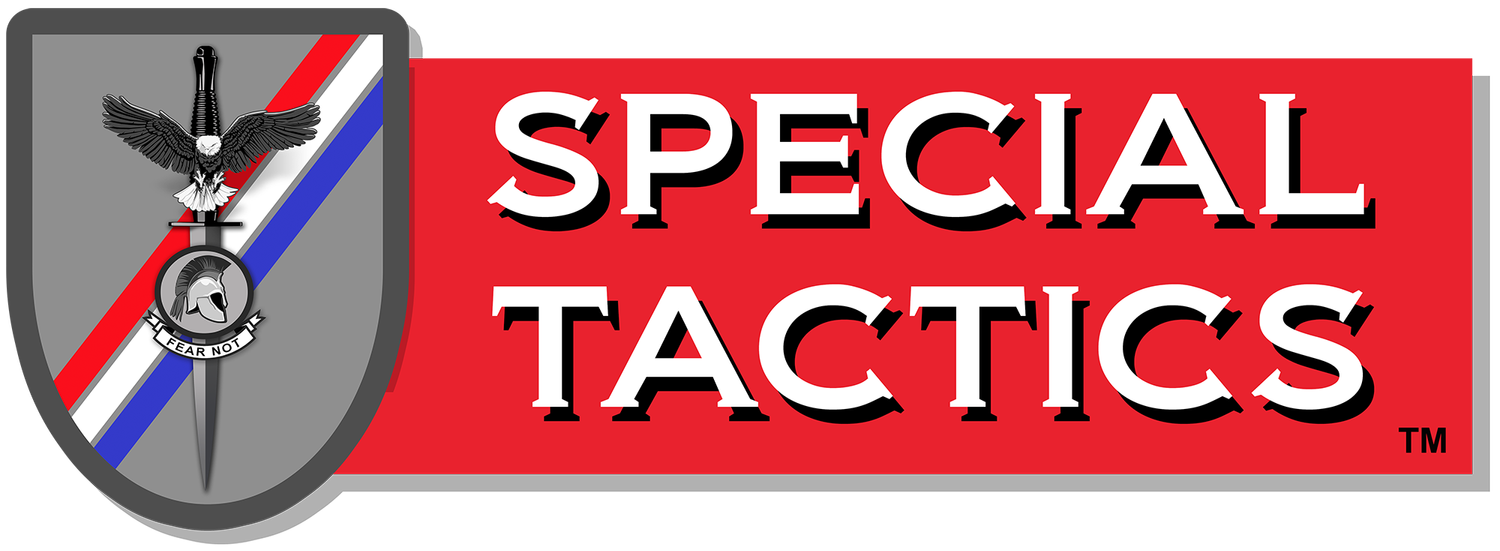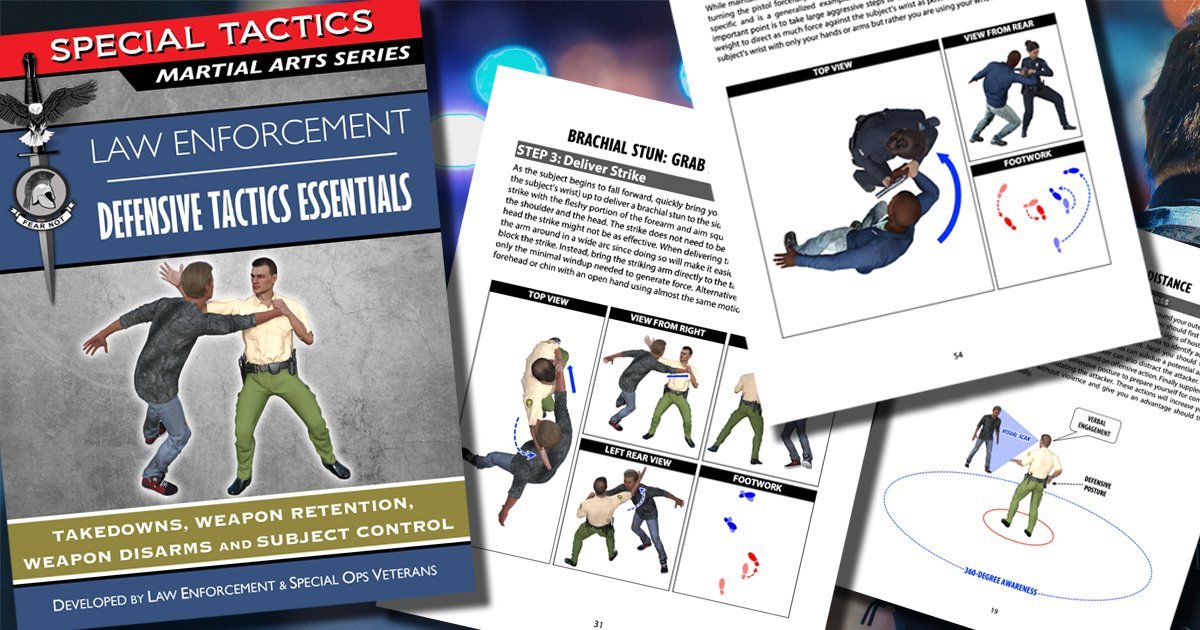Tactical Martial Arts and Law Enforcement Defensive Tactics
This short article is taken from our new Law Enforcement Defensive Tactics Essentials book. The article is drawn from the book’s introduction and gives a brief overview of the Special Tactics Fighting Art (STFA) and discusses the critical concept of reflexive mastery for tactical martial artists. We welcome your reactions, comments and ideas on our Facebook page and if you like the article, click below to check out the book on Amazon.
Law enforcement officers are currently facing some of the most difficult and confusing challenges they have encountered in recent history. Crime, violence, and civil disobedience are rising around the world. At the same time, social trends have in many cases turned public opinion against the police, limited police funding and placed increased restrictions on police use of force. This combination of factors has made the challenge of ensuring officer survival increasingly difficult.
Given the current lack of funding, resources, manpower and skillful trainers, there is a need for defensive techniques and training methods that can achieve effective results with minimal training time. Some martial artists claim that it takes years of dedicated practice to achieve even a baseline level of fighting mastery. Whether this is true or not, many officers may only have a few hours or days of formal training before they must employ defensive tactics skills in a deadly encounter. The Special Tactics Fighting Art (STFA) offers an approach that can allow officers to achieve high levels of performance in a short time by ensuring techniques are as simple as possible, easy to learn, and easy to apply under great stress.
Origins of the Special Tactics Fighting Art (STFA)
The Special Tactics Fighting Art (STFA) is fairly unique when compared to other martial arts in that it is a purely tactical or combat focused fighting art. Stylized versions of traditional/ancient combat arts, or modern martial arts based on the competition ring dominate the current martial arts training market. There is therefore a notable lack of fighting arts specifically designed for the modern tactical professional, whether law enforcement or military. The STFA aims to help fill this gap by providing a fighting art that can be employed in realistic scenarios wearing full duty/combat gear. The STFA is also designed to seamlessly integrate with close quarters battle and gunfighting techniques.
The STFA is drawn from a fighting art originally developed for elite, Tier-1 Special Operations Units, tasked with combating terrorism around the world. The Special Tactics chief instructor who developed this combative art spent over 17 years as a Tier-1 operator and over 25 years in special operations. Prior to his military service, he already had extensive martial arts training experience, having grown up in Asia studying combat-focused martial arts since early childhood. The STFA continued to evolve as it was taught and employed as a military system, incorporating additional techniques drawn from combat experience and other martial arts.
After retiring from the military, the Special Tactics chief instructor spent the next 20 years as a tactical instructor for the law enforcement community. Therefore, the original military focus of the STFA continued to evolve and expand to meet the unique needs of law enforcement operations. Hence, the resulting defensive tactics offered in this book are the product of a lifetime of combat-focused martial arts training and decades of real-world tactical applications in both military and law enforcement operations.
Like most Special Tactics training methods, the STFA is designed to be flexible and easy to integrate into existing martial arts or fighting methods, rather than replace them entirely. Therefore, students who already have martial arts experience will not need to throw out the knowledge and techniques they have already spent years developing. In fact, experience in most martial arts, especially those with greater combat focus, will greatly enhance a student’s ability to learn and apply STFA techniques. Whatever fighting method you are already familiar with, the STFA will most likely serve to enhance your existing system rather than replace it. However, if you have no martial arts experience, the STFA offers a highly-effective and comprehensive approach designed specifically for real world, lethal and non-lethal applications.
The Importance of Reflexive Mastery
As explained in the book, the concept of reflexive mastery is critical to the STFA approach. Unfortunately, many defensive tactics training programs fall short of achieving a level of training that will actually increase the chances of success in the field. In some cases officers who have attended defensive tactics courses still resort to uncontrolled brawling under stress because they have not adequately internalized defensive techniques to the point that they are reflexive. In most cases, officers simply do not have enough time to practice and fully master defensive tactics techniques.
Therefore, in the realm of defensive tactics, optimizing training time primarily relates to ensuring that officers achieve reflexive mastery. Officers must practice a technique repeatedly and correctly under realistic conditions until they are able to execute the technique spontaneously, faster than the speed of conscious thought. It is also critical to be able to execute the technique appropriately despite the many stimuli and variables that might complicate the situation. Otherwise, it is almost impossible that the officer will be able to apply the technique effectively under extreme stress in a real confrontation.
It might seem that true reflexive mastery through practice is an unrealistic goal. However, anyone who has achieved any level of skill in a sport has trained to a level of reflexive mastery in a number of physical skills. The catcher behind the plate or the quarterback in the pocket does not have time to think through the steps required for catching a pitch or throwing a pass. Rather, the action must take place reflexively while the athlete is focusing on the wider picture as the game unfolds on the field. Almost all adults also achieve a level of reflexive mastery in the skills related to driving a car. Most people can drive safely while their conscious mind is occupied with other tasks such as talking or changing the station on the radio. Therefore, reflexive mastery is possible. It just requires a level of training comparable to amateur athletes and new drivers.
In the simplest of terms, achieving reflexive mastery comes down to the number of correct repetitions an officer executes under realistic training conditions. There are various theories about how many repetitions are required for mastery but in truth the exact number can change based on many factors. However, research proves definitively that it takes more than one, two, ten or even one-hundred repetitions to achieve reflexive mastery. Therefore, if a defensive tactics training program does not motivate students to practice frequently enough or with adequate focus and dedication, it will ultimately prove to be ineffective.
Given the time constraints of an individual course, the only practical way for officers to execute enough repetitions of a technique to achieve reflexive mastery is for them to learn the fundamental steps of each technique before the course and start preliminary practice, then conduct as many supervised repetitions during the course as possible. Following that, the student should continue to practice the techniques after the course is completed, using printed and digital references if available. Therefore, training references like this book and the associated online course are critical components for making a defensive tactics training program effective.
Finally, as mentioned earlier, another critical factor to consider when developing a training program that leads to reflexive mastery is the total number of techniques taught in the program and how simple each technique is to learn and apply. If it takes hundreds or even thousands of repetitions to achieve reflexive mastery, a program that teachings ten techniques will require twice as much training time as a program that teaches five techniques. Therefore, it is critical to reduce the number of techniques taught as much as possible, at least until the essential techniques are truly mastered. Only then is it practical to move on and master additional techniques.
We hope you found the short article useful and once again we welcome your reactions, comments or suggestions on our Facebook page where we frequently hold constructive discussions on tactics with people from various tactical backgrounds and experience levels. Also, click below if you would like to check out the full book on Amazon.

